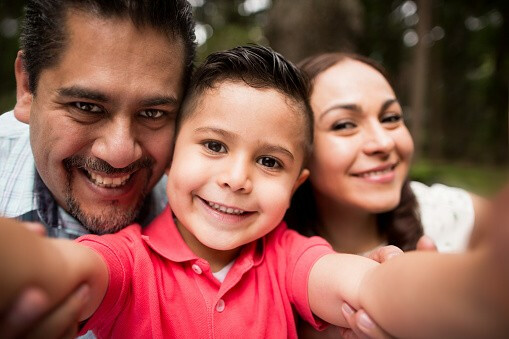Candy Conard said she has never seen a program address poverty as effectively as Circles does.
"Several things about the program stand out to me,” said Candy, who serves as a volunteer facilitator for the Circles leader training. “The focus is to help people get out of poverty and stay out. As a social worker I have seen many many programs designed to help people and I have never seen one that helps people get out of poverty and stay out."
The goal of Circles is to inspire and equip individuals and families to permanently move out of poverty and thrive. The Green Bay Circles chapter, which started earlier this year, runs out of the Green Bay Community Church Care Center.
Every Monday evening during the fall 11 pre-qualified families, which includes 14 adults and 18 children, meet in the Care Center to share a meal and receive training. Circle volunteer leaders facilitate small groups to discuss wide-ranging topics such as bullying, healthy lifestyles, boundaries, emotional well being, exercise and financial management practices.
Children are split off by age groups and cover the same topics as their parents, which promotes family conversations during the week.
“We’re exposing people to things they wouldn’t have access to,” said Jen Schmohe, Circles coordinator. “The secret in the sauce is those relationships that get gelled and made. That’s what sustains Circle leaders into success.”
By bringing volunteers and low-income people together, the hope is that Circles will help the participants increase their household income as well as solve transportation and debt problems.
“We’re also working with children to break the generational cycle of poverty by engaging them with instruction and curriculum,” Schmohe said. “While parents learn, so do the kids.”
Participants in the program must apply, go through an interview process and qualify based on their income level. The goal is to have families fully functioning after spending 18 months in the program.
The Circles program relies on food donations to put on the weekly Monday meals. Schmohe said the long-term goal is to have a number of small groups commit to providing a meal once a month.
Other poverty programs tend to put band-aids on the problem, according to Jen, and Circles tries to address that.
“In other programs no one is hanging around for the long haul,” Jen said. “One of the biblical analogies we use is the story of the Good Samaritan. He cared for (the fallen man) in the moment he found him but followed through and continued to check on him."
There are about 80 Circles volunteers, with about 90% coming from Green Bay Community Church. The goal is to find more volunteers in the community.
“We have to look outside these walls,” Circles coach Dee Thetford said. “We’re looking at how we can better serve our community. It’s not just doing something that makes you feel good but can impact your community.”
Jen said it’s important that participants come every week and feel loved and cared for and supported. At the same time volunteers feel like they’re making a difference.
"There is a different flavor of involvement when people are helping and serving because they want to and it is not tied to a job,” Candy said. "We all know that one cannot successfully go through life without relationships. The program fosters relationships. I have seen this happen weekly."
Dee said she sees her involvement in Circles as an opportunity to live out her faith. "My dream job is to sit down with somebody, learn their story and then be able to connect them with resources to empower them to change,” she said. "It’s exactly what my role is."
One of the things Jen loves about the Circles program is that it’s not solely based on outcomes. “We know going into this that it’s messy,” she said. “Human beings in life are messy but there’s beauty in the mess. The beauty in the mess is the restoration that happens and the things people get out of it."



